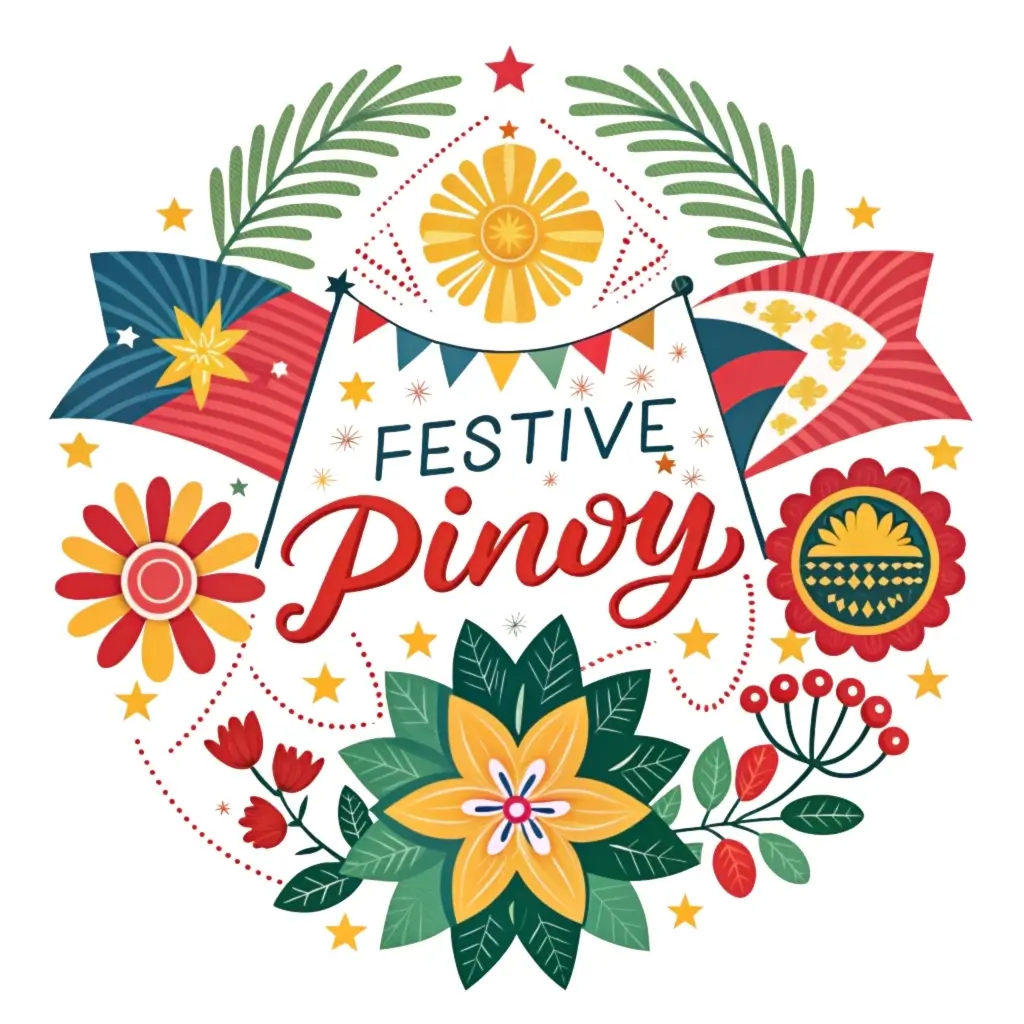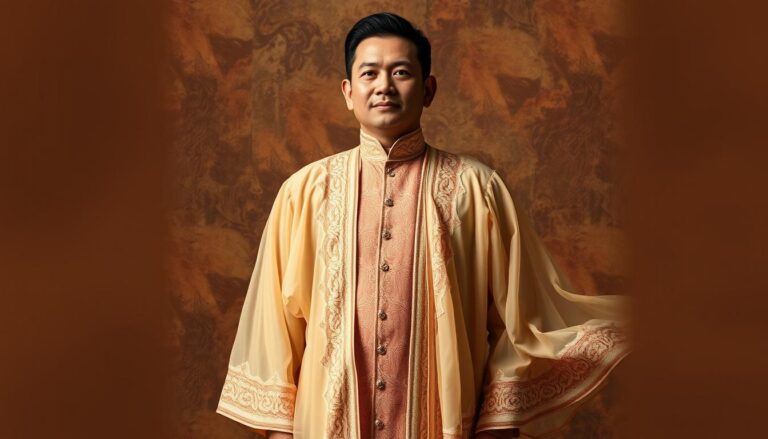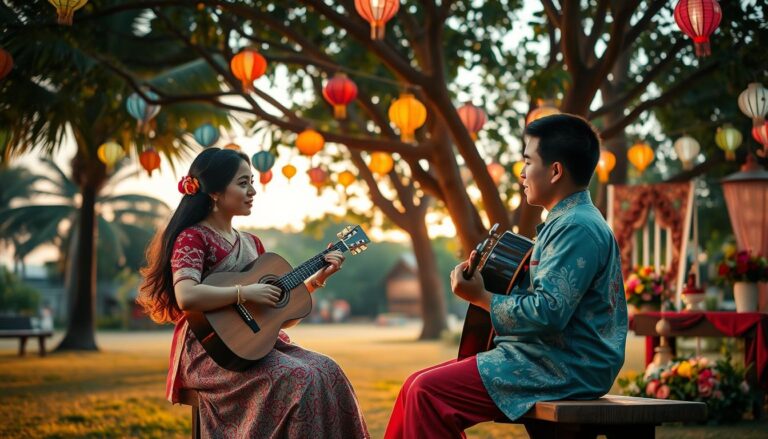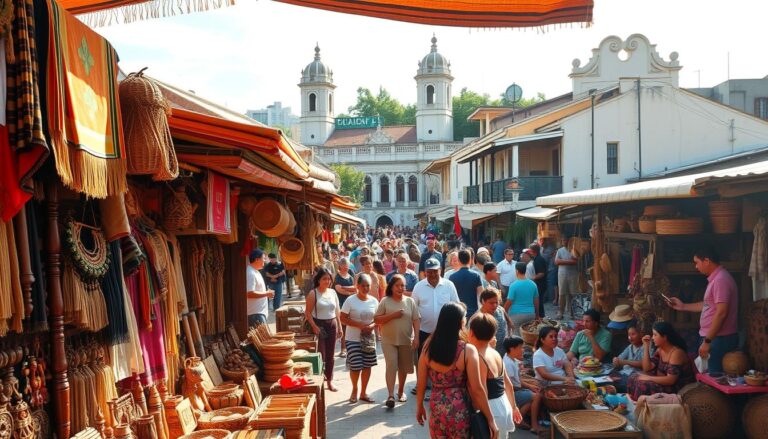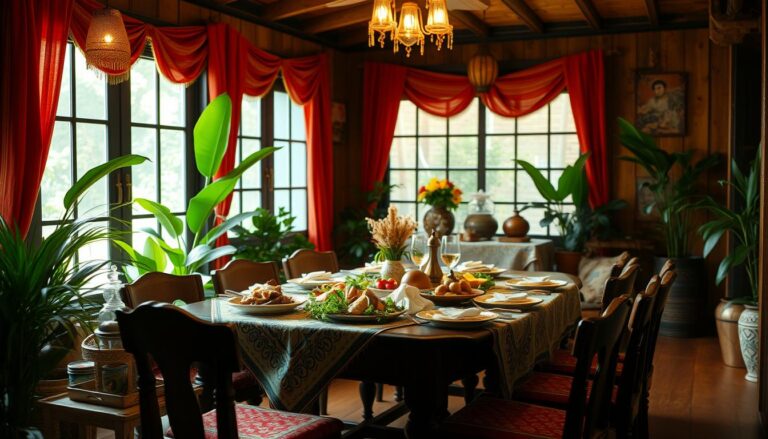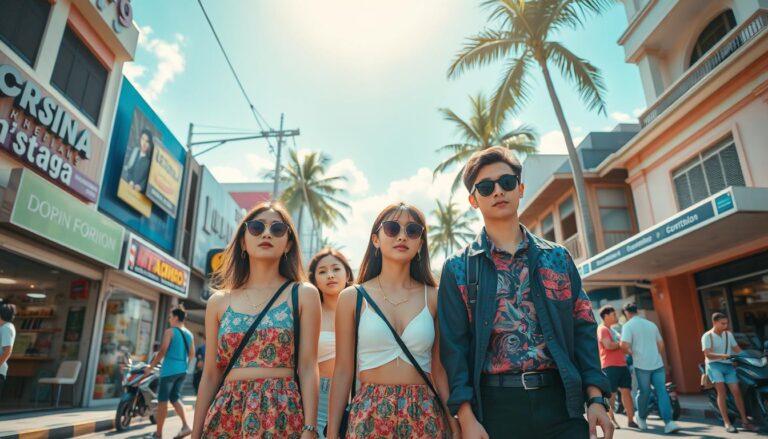Barangay Rituals and Ceremonies
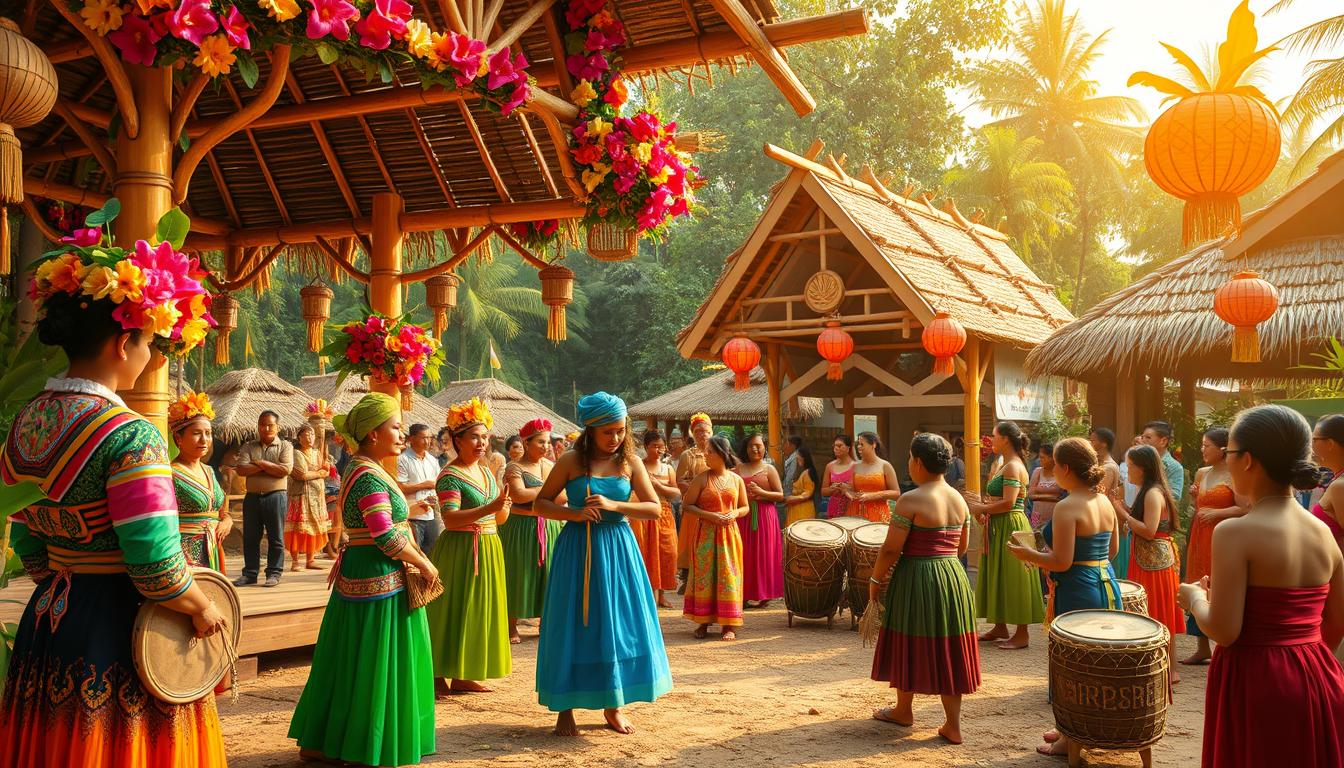
Did you know over 142 Barangay Captains from Quezon City came together? They celebrated the importance of barangay rituals and ceremonies at the Quezon City Barangay Seal of Good Housekeeping Awarding Ceremonies. This event shows how these rituals are key to our culture, shaping who we are in the Philippines.
In barangays, cultural ceremonies mean a lot. They are moments that bring people closer together. From lively festivals to important rites of passage, these events celebrate and keep our heritage alive. They show how barangay rituals unite us, bring back memories, and highlight our community’s pride and uniqueness.
Exploring barangay rituals and ceremonies reveals the heart of Filipino culture. They connect us, weaving a rich tapestry of shared experiences, history, and identity.
Key Takeaways
- Barangay rituals enhance community identity and social interconnectedness.
- Cultural ceremonies in barangays showcase a blend of history, religion, and local traditions.
- Participation in these events evokes a sense of belonging and continuity among community members.
- The significance of barangay rituals is essential in preserving Filipino heritage.
- Modernization poses challenges to the continuity of these cultural practices.
- Economic conditions often influence the sustainability of rituals and ceremonies.
- Awareness and cooperation from the community are vital for preserving these traditions.
Understanding Barangay Rituals and Their Significance
Barangay rituals are key in Filipino communities. They let people show their culture and strengthen bonds. These rituals help everyone feel connected, showing the rich community traditions that make us who we are.
The Role of Community Identity in Rituals
Rituals in barangays show who we are as a community. They celebrate our traditions, bring us together, and pass down values. These events show each person’s role in the barangay, making us feel part of something bigger.
Connection to Historical Context and Memory
The historical context of barangay rituals gives them deep meaning. They remember important moments in our history. By joining in, we connect with our past, like in the Kahimunan Festival and Subanen gatherings. These moments show the beauty of our heritage.
Cultural Customs and Traditions in Barangays
The Philippines is known for its rich cultural customs. These customs show the diverse traditions found in barangays. You’ll see a mix of history and local practices that make Filipino culture special.
Respect is key in social interactions. People use “po” and “opo” to show respect to elders. Family is very important, with gatherings for big events and holidays. This shows how community is a big part of daily life.
Overview of Filipino Customs
Traditional beliefs shape Filipino customs a lot. Food and clothes are big parts of these customs. Meals often include rice, meats, and veggies, showing a love for eating together.
Traditional clothes like the malong and barong show off regional pride. They also highlight the skill of local artisans. These customs bring people together, connecting generations through shared practices.
Variations in Practices Across Regions
Every barangay has its own way of celebrating. For example, the Binalayan Festival in Binangonan celebrates bamboo and marine products. The “Sunduan” street pageant shows respect for women and romance.
These differences make the cultural scene rich and exciting. They invite you to discover the unique traditions of each community. To learn more about Filipino food, like lechon, visit this link.
Barangay Rituals and Ceremonies
Barangay rituals and ceremonies are key in Filipino culture. They celebrate and remember important moments. These events bring people together, sharing stories and history.
They show the rich diversity of community identity and shared memories.
Types of Rituals: Celebrations and Commemorations
Festive events in barangays include fairs, cultural shows, and games. They entertain and highlight local traditions. Commemorations, like weddings and memorial services, strengthen family and cultural ties.
Community Involvement in Ceremonial Events
Everyone plays a part in barangay events. This makes everyone feel connected and valued. It’s a way to celebrate and learn together.
Even as the world changes, these events remain important. They bring people together, locals and visitors alike, enriching the community’s spirit.
| Type of Ritual | Description | Examples |
|---|---|---|
| Celebrations | Festive events that engage the community, often featuring performances and games. | Fiestas, cultural fairs, street dances |
| Commemorations | Rituals that honor significant life events or memories and reinforce social bonds. | Weddings, funerals, graduations |
| Community Involvement | Participation from various community members enhancing social cohesion. | Local volunteers, barangay gatherings, group preparations |
Traditional Rituals in Barangays and Their Practices
In the vibrant tapestry of Filipino culture, traditional rituals in barangay settings play a crucial role. They mark significant life events like birth, marriage, and death. Each event has its own customs, strengthening community bonds and cultural identity.
Understanding these practices helps us appreciate the rich local heritage. It’s a way to connect with our roots.
Rites of Passage: Birth, Marriage, and Death
Rites of passage in the barangay tradition highlight the life cycle of individuals. Birth rituals often include baptismal celebrations, where families gather to welcome a new member. These customs symbolize the beginning of an individual’s journey and the responsibilities of their family.
Marriage ceremonies are elaborate events filled with rich customs. Couples participate in traditions that may involve asking for blessings from the elders. This shows the community’s role in their union. It underscores the value placed on family and communal ties.
Funeral practices encompass a range of activities post-death. These include rituals to honor the deceased, ensuring their safe passage to the afterlife. Gathering for these ceremonies provides a space for shared grief, fostering connections among community members. The grieving process is communal, often reinforced through traditions passed down through generations.
Culinary Traditions and Food in Ceremonies
Culinary traditions are integral to the customs observed during these significant life events. Food acts not only as sustenance but also as a means of cultural expression. Dishes prepared for weddings often feature local ingredients and recipes, showcasing the barangay’s heritage.
During birth celebrations, specific delicacies might be served to symbolize prosperity and good fortune for the newborn. Funeral banquets allow family and friends to gather, share stories, and celebrate the life of the departed. Through these culinary practices, traditions thrive, reinforcing community identity and shared values.
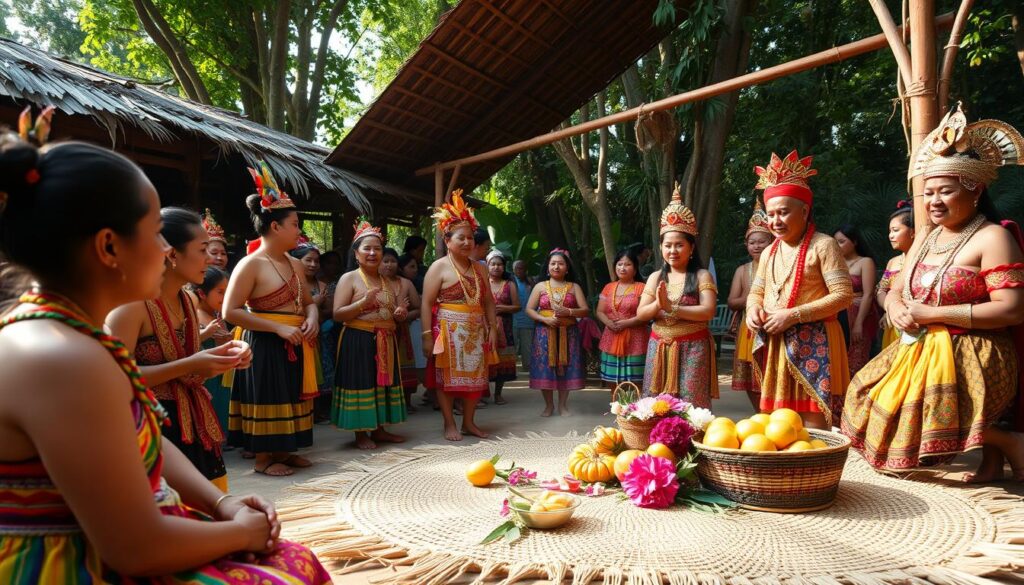
| Life Event | Rituals and Practices | Culinary Traditions |
|---|---|---|
| Birth | Baptismal celebrations, welcoming rituals | Sweet rice cakes, local fruits |
| Marriage | Community blessings, traditional dances | Lechon, assorted delicacies |
| Death | Funeral rites, mourning rituals | Rice porridge, sharing traditional dishes |
Spiritual and Religious Aspects of Barangay Rituals
Spirituality in barangays is a mix of old traditions and new religions. This blend shows how local groups adapt their rituals to include Catholicism and Islam. Yet, they still keep their ancient beliefs alive. This shows their strong bond with their heritage, even as religions change.
Indigenous Beliefs and Practices
In barangays, rituals often focus on supernatural beings like anito and diwata. These beings guide the community through important times. Rituals aim to heal sickness and bring good harvests.
For example, people offer valuable items to please the gods for luck. The Bagobo tribe believes in nine heavens, each with its own god. Figures like Pamulak Manobo and Tigyama are called upon for protection and health. This variety of beliefs shows a rich cultural mix.
Integration of Major World Religions
As barangays mix religions, their ceremonies change to include new customs. These events are grand and show the community’s unity. They bring people together, creating a sense of belonging.
This mix of old and new enriches barangay culture. It shows how communities keep their identity while embracing new beliefs. This creates a vibrant and unified cultural scene.
Community Gatherings and Local Ceremonial Events
Community gatherings in barangay are key to social unity and cultural sharing. Local ceremonies, tied to festivals, bring people together. They celebrate shared histories and strengthen community bonds. These events showcase the rich traditions and foster a sense of belonging.
Festivals and Their Importance to Community Life
Festivals are vital to community life, promoting teamwork and unity. Celebrations like the Ati-Atihan Festival in Aklan and the Sinulog in Cebu City draw both locals and tourists. They:
- Showcase traditional customs and arts
- Boost local commerce
- Stir pride and identity in the community
Seasonal Events and Agricultural Celebrations
The Philippines has many seasonal events, many celebrating the land’s bounty. The Kaamulan Festival honors indigenous tribes and the planting and harvesting cycle. The Pahiyas Festival in Lucban celebrates the rice harvest. Joining these celebrations lets you see the community’s joy and their deep connection to nature and tradition.
Indigenous Ceremonies and Ancestral Traditions
In the rich tapestry of Filipino culture, indigenous ceremonies in barangays are key. They connect us to our ancestral traditions. These rituals show the unique heritage of different tribes and the values passed down through generations. They highlight the need to preserve these cultural practices for the future.
The Importance of Ancestral Heritage
Keeping ancestral traditions alive is vital for indigenous peoples. These practices cover many areas of life, like spirituality and social cohesion. For example, the Agta tribe of Bicol has special customs like traditional skirts and breechcloths.
Their rituals honor ancestral spirits, or Anitos, through dance and hunting movements. This shows their dedication to their heritage.
Preservation Efforts for Indigenous Practices
Recently, there’s been a push to save indigenous ceremonies in barangays. Local communities and the government see their value. They help promote unity and education.
Places like Buguias in Benguet are key examples. They show how land and tradition are connected. Preserving agricultural rituals helps keep the environment balanced and honors ancestral customs.
| Tribe | Location | Traditional Clothing | Ritual Practices |
|---|---|---|---|
| Agta | Bicol | Tapis for women, Bahag for men | Dances dedicated to Anitos |
| Kankana-ey | Cordillera | Traditional woven outfits | Agricultural ceremonies |
| Oyango | Iriga City | Customary dress | Rituals honoring spirits |
These efforts show the importance of indigenous ceremonies. They help communities stay strong against modern challenges. By joining these efforts, communities show their commitment to their traditions. This ensures these important cultural practices continue for future generations.
The Impact of Modernization on Barangay Rituals
Modernization changes barangay rituals, bringing both good and bad. As communities grow, old traditions mix with new ones. This mix keeps traditions alive but also brings in fresh ideas.
Effects of Migration and Globalization
Migration has a big impact. Families move for better jobs, mixing cultures. This change makes local rituals adapt, keeping their essence alive.
The Manobo tribe shows how important biodiversity is. As they meet new people, they update their rituals. This keeps their identity strong while welcoming change.
Adapting Traditional Practices in Contemporary Society
Modern changes make it hard to keep traditions alive. Places like the Talaandig tribe’s forests face threats. Yet, communities find ways to keep their heritage by creating new rituals.
These new rituals focus on conservation and awareness. It’s key to involve young people. This way, cultural values stay alive in today’s world.
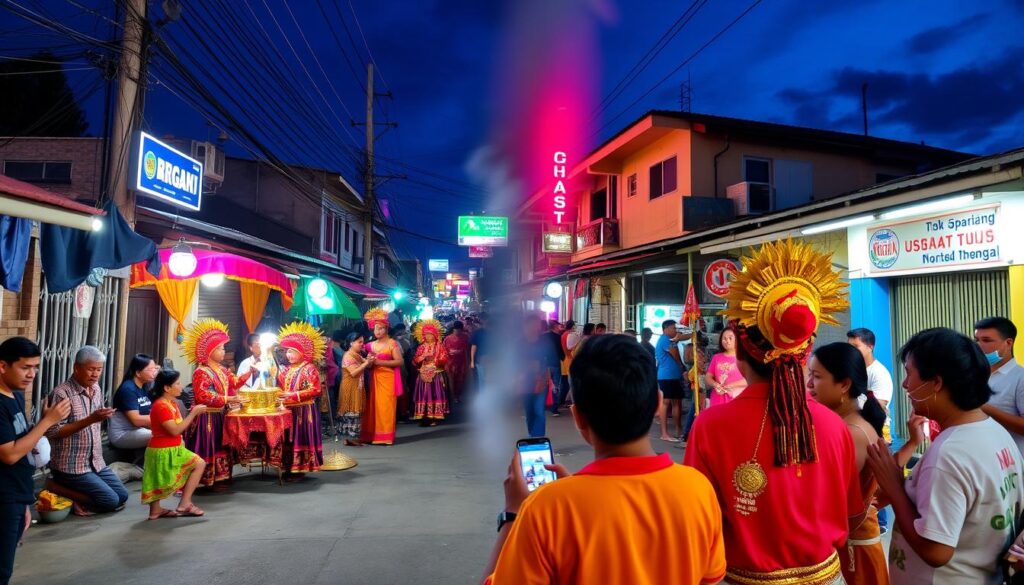
| Challenges | Adaptations | Community Impact |
|---|---|---|
| Migrant families altering local customs | Integration of diverse traditions | Broader cultural expression |
| Threats to sacred sites from modernization | New rituals highlighting conservation | Increased awareness and community solidarity |
| Generational gaps in traditional knowledge | Educational initiatives for youth | Revitalized interest in cultural heritage |
Challenges in Maintaining Barangay Traditions
Keeping barangay traditions alive is hard due to economic issues and the need to mix old ways with new ones. In Barangay Tabayo, the Subanon tribe is struggling. Younger people are losing interest in their customs, which threatens their identity and culture.
Economic Factors Affecting Ritual Practices
Economic issues affect indigenous communities a lot. In the Subanon case, projects like KALAHI-CIDSS NCDDP try to save their culture. The IP Heritage Village in Barangay Tabayo shows Subanon arts and crafts, teaching school kids.
This effort not only preserves traditions but also creates jobs through educational programs. Other groups, like the Sama Dilaut, face similar problems. They are forced to leave their homes, losing their cultural practices. They also deal with voting rights, healthcare, and education issues.
Balancing Tradition with Modern Expectations
It’s hard to keep traditions alive while adapting to new ways. The Higaunons of Barangay Lubilan show how outside influences change their customs. They still have traditional ceremonies but also modern ones.
It’s key for communities to blend new things with their old ways. Talking openly within groups helps. Education strengthens cultural understanding and identity, making it easier to discuss traditions and modern life.
| Community | Challenges Faced | Efforts in Cultural Preservation | Outcome |
|---|---|---|---|
| Subanon (Barangay Tabayo) | Declining interest among youth, economic pressures | KALAHI-CIDSS funding, IP Heritage Village | Increased cultural engagement, educational progress |
| Sama Dilaut | Relocation, loss of homeland, healthcare access | Personal empowerment through education | Potential for improved living conditions |
| Higaunon | External cultural influences, loss of authenticity | Preservation of traditional practices alongside adaptations | Balancing tradition with modern society |
Conclusion
Reflecting on barangay rituals shows they are more than just tradition. They are key to the cultural strength and identity of the Philippines. These ceremonies connect people to their past and to each other, reminding them of shared experiences and beliefs.
The Ibaloys and Subanen tribe’s rituals show a strong will to keep their culture alive. These practices, like rites of passage and communal gatherings, build a sense of community. They help people stay connected to their heritage even as society changes.
Preserving barangay rituals is a way to strengthen Filipino communities. It celebrates the rich culture of the Philippines and ensures these traditions continue for generations to come.
